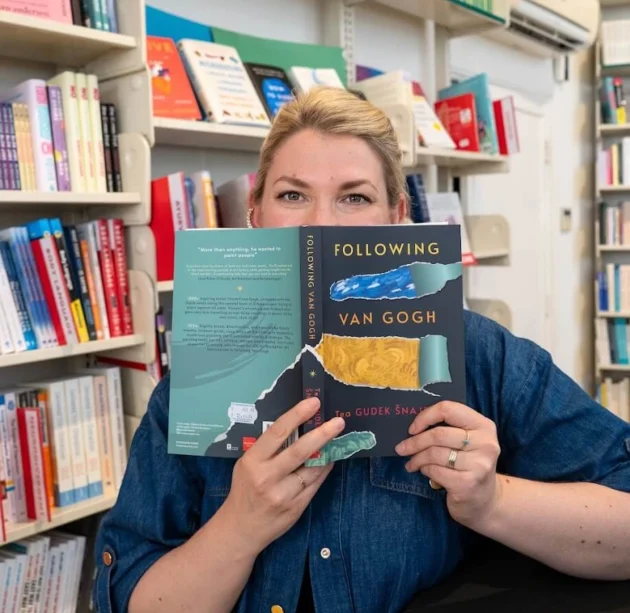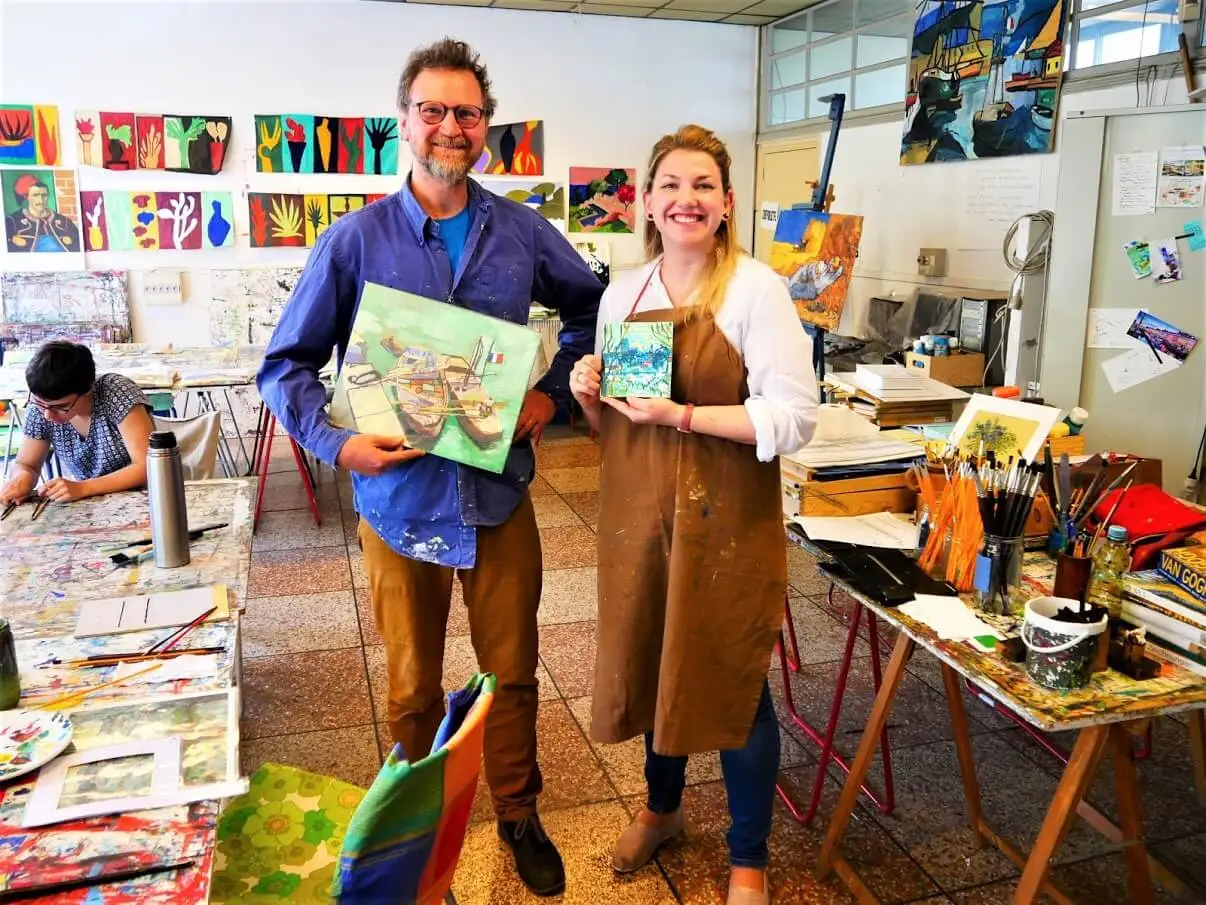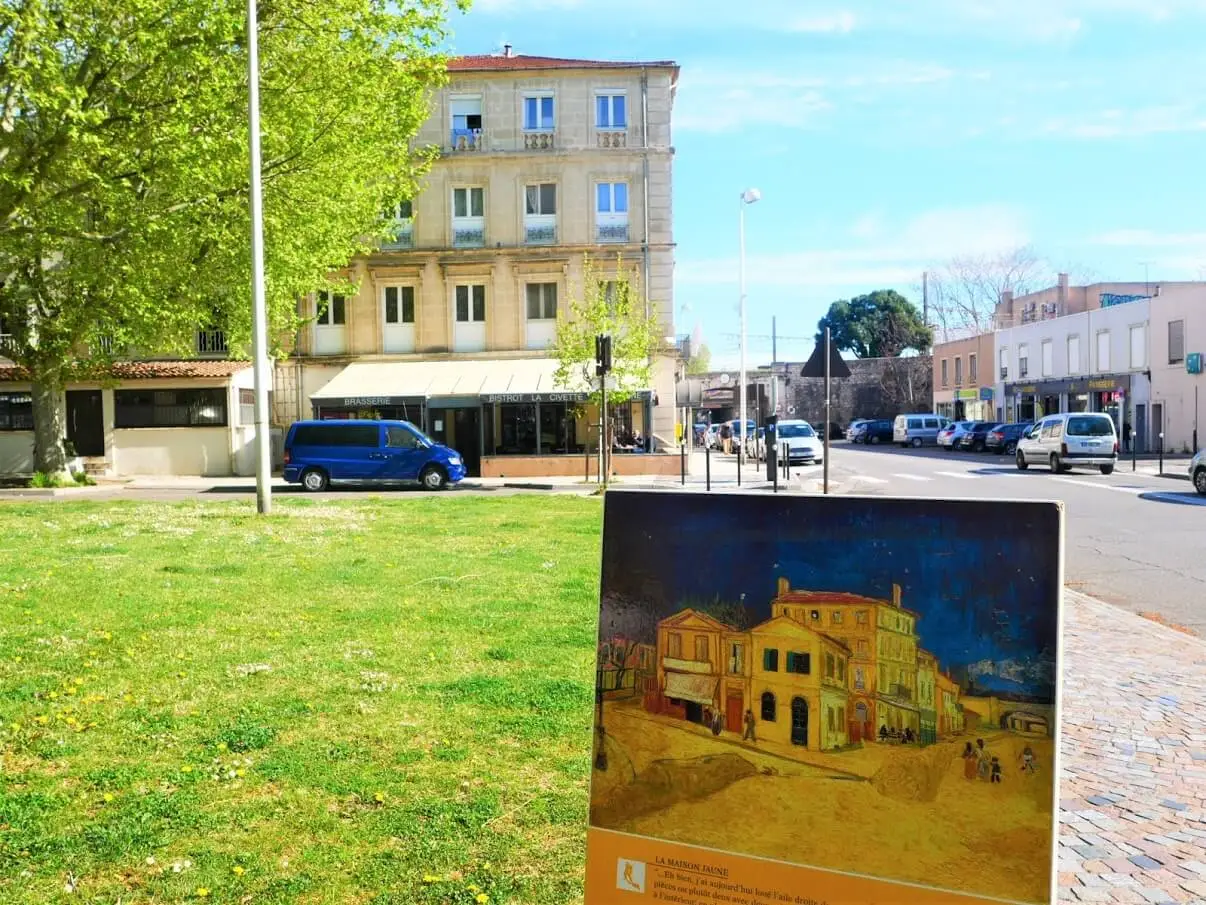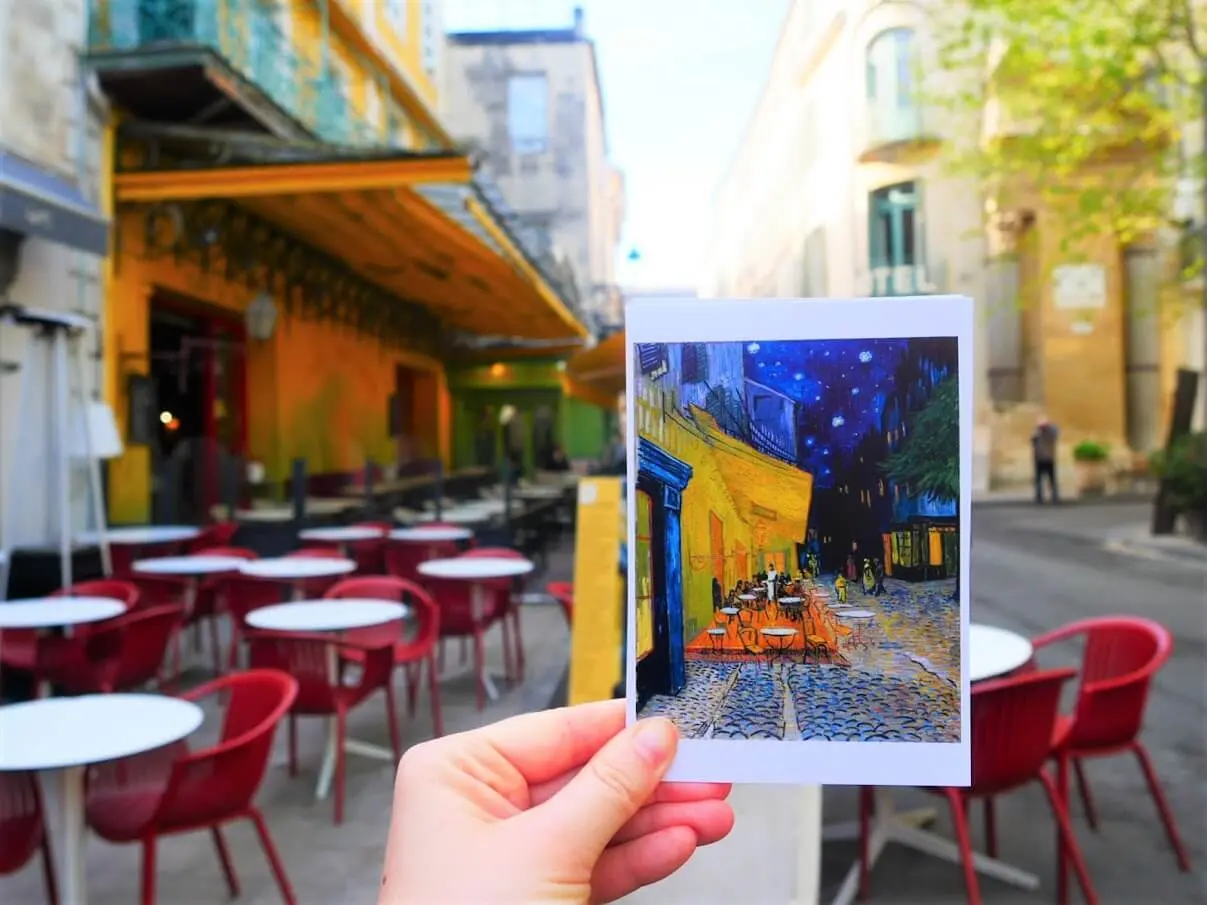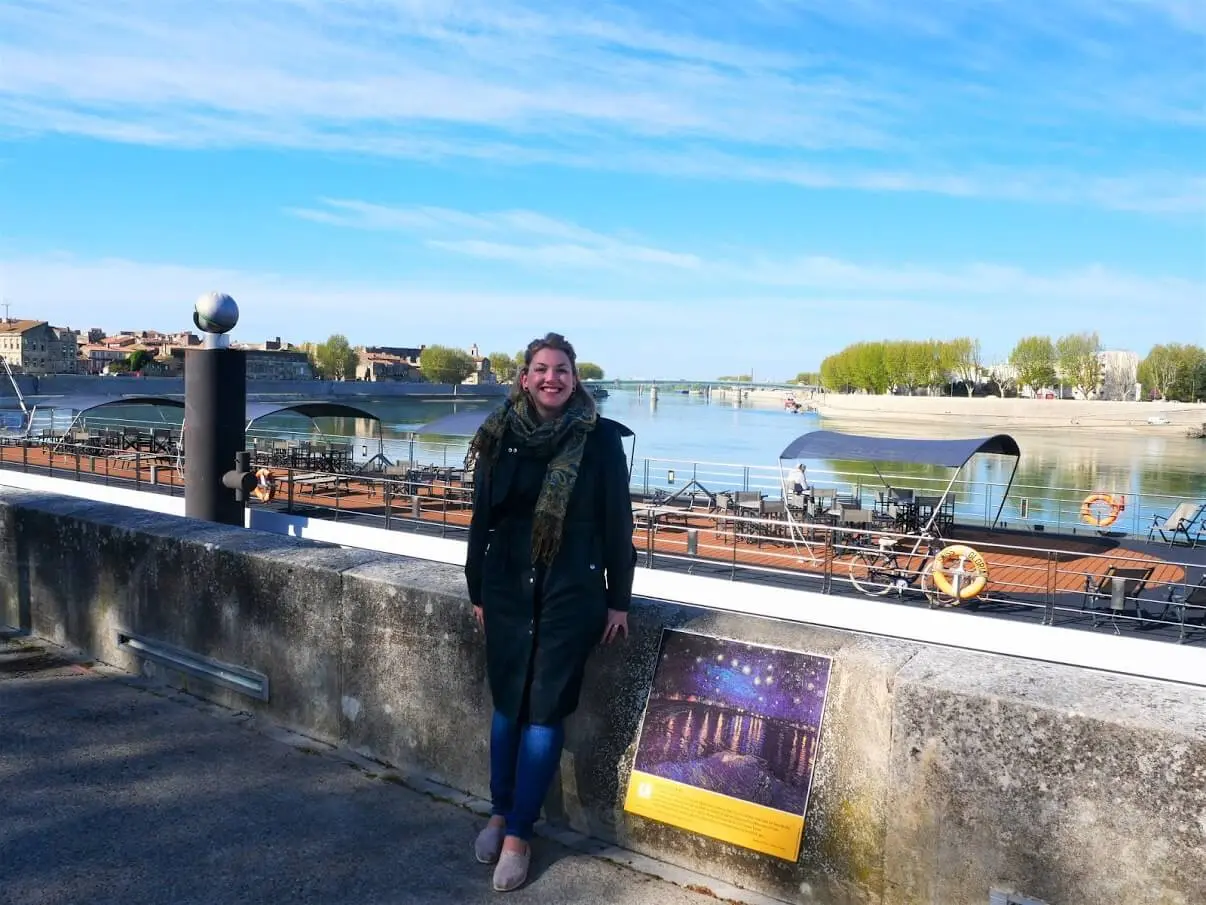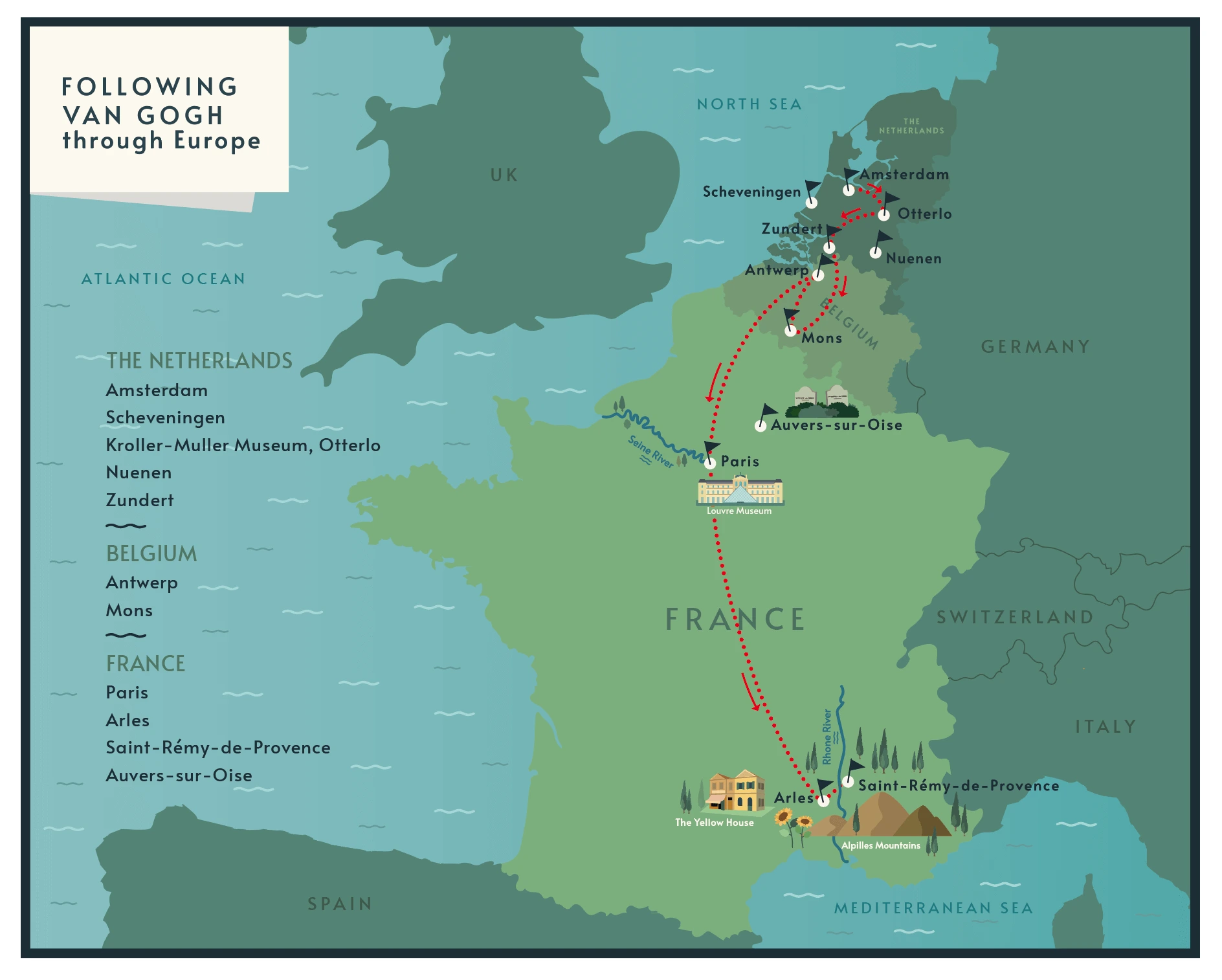I wrote a book!
If you follow Culture Tourist on Instagram and Facebook, you may already be aware of this. I shared updates about my writing journey there and might have spammed you a bit over the past month with posts and stories about the book launch event and where you can find my book.
In this article, I would like to share more about my motivation, writing process, and the reasons behind writing Following Van Gogh book.
How did I decide to write the Following Van Gogh book?
It all began with a trip.
In 2019, I embarked on one of my all-time favourite trips. Over the course of two weeks, I travelled from Amsterdam through the southern Netherlands, Belgium and into France, visiting locations linked to the life and work of one of my favourite painters, Vincent van Gogh.
Prior to this trip, I had already worked as a guest guide at the Van Gogh Museum for a few years, researching and exploring the famous painter’s artwork in detail.
I was always fascinated by the incredible variety in Van Gogh’s paintings throughout his ten-year career. The colours, brushstrokes, and subjects varied widely depending on whether he was living in the Netherlands or the south of France. This led me to wonder if these were influenced by the locations where he lived during his painting career.
I delved deeper into his life by reading the letters he wrote to his brother Theo, seeking out the locations he mentioned, and ultimately creating an itinerary to follow in Van Gogh’s footsteps. Finally, I spent two weeks exploring places associated with his life and work.
⤷ Read more: Van Gogh locations in the Netherlands, Belgium & France
How did I follow in Van Gogh’s footsteps?
I began my journey in the Netherlands, home to the two museums with the largest collections of Van Gogh’s artwork: the Van Gogh Museum in Amsterdam and the Kröller-Müller Museum in Otterlo.
Next, I took a train to the Brabant Region in the south of the Netherlands, where Van Gogh was born and began his painting career. It was here that he created works such as “The Potato Eaters”. While I was there, I recognised some of the earth pigments, various shades of brown and grey, that he used in his paintings from that period.
From Brabant, my journey continued to Belgium, specifically to the Borinage Region. Van Gogh spent a couple of years there before fully dedicating himself to art, during which time he preached and lived among coal miners, attempting to brighten their harsh lives.
I also visited Antwerp, where during the course of two months, Van Gogh attended art lessons at the Art Academy, making it the only place where he received formal art education.
His artistic journey reached new heights after he moved to France, which was my next stop. In Paris, he was introduced to modern art, leading to a significant transformation in his style. He then traveled south to Arles, where he developed his unique style and created some of his most famous paintings, including “Sunflowers” and “The Bedroom”.
However, it was also in Arles that his mental illness began to manifest, eventually leading him to spend a year in the asylum in Saint-Rémy-de-Provence. From the window of the hospital one early morning, he painted “Starry Night”. The final two months of Van Gogh’s life were spent in the small village of Auvers-sur-Oise.
Visiting all these locations allowed me to appreciate Van Gogh’s artworks in a completely new light. I came to understand that he was much more of a realist than I had previously thought. In Paris, I could recognise the unique colour of the sky found in his paintings, while in Arles, I was captivated by the thin, curly clouds that seemed to have been lifted directly from his work.
⤷ Read more about my trip on this links:
- Van Gogh locations in the Netherlands
- Van Gogh locations in Belgium
- Van Gogh locations in Paris
- Van Gogh locations in Arles
- Van Gogh locations in Saint-Rémy-de-Provence
- Van Gogh locations in Auvers-sur-Oise
Inspired by a trip
That trip was so inspiring that it sparked the idea for me to write a book about it. Initially, I thought of creating a travel guide to help fellow travellers who wanted to embark on a similar journey.
But then I thought I could be a bit more creative and write a fictional story inspired by the trip. And eventually, I did that!
I was playing with the idea of writing the story for a few years, but it seemed like such a massive task that I kept postponing it. Although I gathered notes and wrote short paragraphs ever since I returned from the trip, I ultimately made the decision in November 2023 that it was now or never; I needed to take the plunge and write the book.
I had a feeling it was the right time to start that massive project. But little did I know I would move countries, live in three cities and four different houses during the time I was writing my book.
Well, when is the right time to write a book, anyway?
To publish or self-publish a book?
When I began to think seriously about writing my book, Following Van Gogh, one of the first dilemmas I faced was whether to pursue traditional publishing or to self-publish.
Initially, I believed that going with a traditional publisher would be the best choice. However, I felt hesitant because I worried that, as a debut author, I might struggle to find a publisher or secure a good publishing deal.
On the other hand, when I considered self-publishing, I was concerned that my lack of experience in fiction writing and producing a book would result in a final product that wouldn’t be the best.
Ultimately, I chose a middle path and decided to work with a self-publishing agency. I partnered with Storyhouse Works, which offered a range of professional services, including an account manager, illustrator, editor, and layout designer. I even had a writing coach who was immensely helpful during the early stages of writing the book.
Additionally, they acted as a liaison by arranging the printing, distributing my press release, and reaching out to the media to organise my book launch event.
This option required a financial investment from my side because I had to pay for their services. However, I keep the copyrights ownership and the book sales revenue.
I also helped myself a bit with covering some of the costs by running the crowdfunding campaign on voordekunst. Besides many private backers, Het Cultuurfonds Noord-Holland also supported the campaign, endorsing my book in an early stage that way. It kept my motivation high, as well.
What did my writing process look like?
In the end, it took me a year and a half to write my book which was finally published in June 2025. At the beginning, I worked with a writing coach who helped me structure the story, create the storyline and develop the characters.
During those early days, I also began collaborating with an illustrator to design the book cover and a map, as the story involves a lot of traveling. Although at the beginning I thought it might be a bit early, it was one of the best things to do, because having a book cover in front of me helped so much with the motivation during the lengthy writing process.
Somewhere around the middle of the writing process, I started working with an editor. Although the idea of writing a book in English (as a non-native English speaker) sounded great at the beginning (well, I’m comfortable writing all the articles on Culture Tourist in English, so what could go wrong?), I quickly learned that writing fiction in a second language was a completely different challenge.
That’s why it was one of my most important requirements for this book to have a native-English speaking editor. She worked wonders with my story, transforming my sometimes clumsy sentences into beautiful prose.
Once the first draft was complete and edited, I sent it to four beta readers. Their feedback was invaluable and helped me make some final adjustments before publication.
After that, the book went through another round of editing and was finally ready to be sent to the layout designer. This step was one of the most exhausting parts of the process. When the designer returned the layout, I had to meticulously check it for any mistakes we might have overlooked. And, oh boy, did I find mistakes! We went through this process five times over the course of three days, and at one point, I could hardly look at the manuscript anymore.
So, if you happen to find any grammar mistakes or typos in the book, please don’t bring them to my attention!
After all the revisions and checks, the book was finally ready to be sent to print!
What is the Following Van Gogh book about?
Following Van Gogh is an art crime novel that follows a Van Gogh Museum guide as she embarks on a journey from Amsterdam to France, visiting locations associated with Van Gogh. Along the way, she gets involved in uncovering a criminal group that has been stealing artwork from European museums, galleries, and private collections.
Each chapters begins with a paragraph dedicated to Van Gogh’s life, intertwining the historical and contemporary plots that way.
How can you get a copy of the Following Van Gogh book?
Are you interested in reading the story and wondering where to get a copy of Following Van Gogh? If you would like a signed copy, you can order it directly from me by sending me a message through the Following Van Gogh book website.
If you’re in the Netherlands, you can find Following Van Gogh in various museum shops and bookstores in Amsterdam and Haarlem, including the Rijksmuseum, The American Book Centre, Scheldema, Pantheon, or the Catnap Bookstore.
For those living outside of Europe, the best option is to order it through Amazon by following this link.
You can also find it as an e-book on the majority of platforms.
Writing the Following Van Gogh book took lots of time, I felt the biggest imposter syndrome ever while writing it, and it was one of the hardest things I’ve ever done. However, sharing that story with the world, hearing people buying additional copies as a present for their friends after they read it, and telling me they searched the paintings and locations I mentioned in the story online, made it all worth it.
Do you have any questions about the writing process or my book? Put them in the comments!

